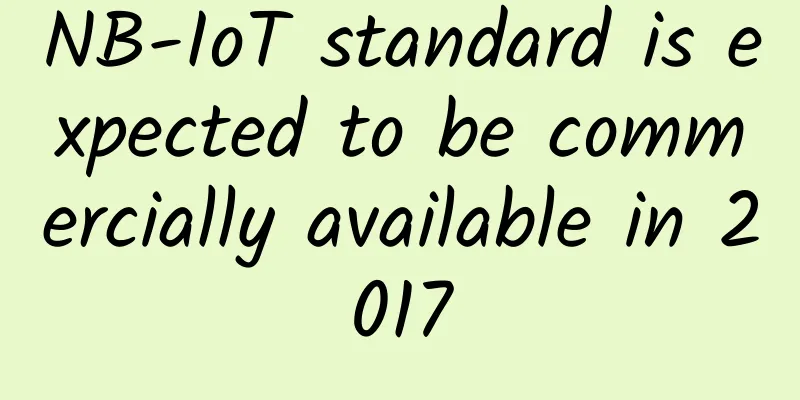How do LoRa and LoRaWAN help build smart cities?

|
Smart city networks power everything from self-driving cars, traffic monitoring, first responder services, and smart streetlights. Long-range (LoRa) wireless technology can help cities overcome coverage challenges and enable them to widely deploy IoT solutions in smart cities, providing coverage that traditional Wi-Fi solutions cannot provide.
Sensors that measure and monitor the environment and enhance services require both large amounts of network bandwidth and, equally important, coverage. After all, sensors are not very useful if they can’t connect to a city’s wireless network. However, deploying coverage across an entire city can be difficult and expensive. “LoRa devices and the open LoRaWAN protocol enable intelligent IoT applications that address some of the biggest challenges we face in building smart cities: energy management, natural resource reduction, pollution control, infrastructure efficiency, disaster prevention, and more,” said Semtech, developer and founding member of the LoRa Alliance and LoRa Technology. The LoRaWAN specification is a low-power, wide-area network protocol designed to wirelessly connect IoT devices. As the LoRa Alliance points out, it meets key IoT requirements such as "two-way communication, end-to-end security, mobility, and localization services." What is the LoRaWAN protocol? As StateTech reports, LoRa "is a wireless data communications technology that is distinct from the Wi-Fi standard." LoRa operates on the 900 megahertz wireless spectrum, providing access to the LoRaWAN network. LoRa is a radio physical layer modulation technology, according to LoRa Alliance member Cisco Systems Inc. Cisco notes that LoRa "provides long-range air propagation, low power consumption, high receive sensitivity, low data rates, robust spectrum expansion, and secure encrypted transmission." According to the LoRa Alliance, the LoRaWAN open specification is a low-power wide-area network (LPWAN) protocol based on LoRa technology. Basically, LoRaWAN is the communication protocol and system architecture of the network. The solution is ideal for covering wide areas where trees and other obstacles may block traditional Wi-Fi signals. “Designed to wirelessly connect battery-powered devices to the Internet in regional, national, or global networks, the LoRaWAN protocol utilizes unlicensed radio spectrum in the Industrial, Scientific, and Medical (ISM) bands,” Semtech noted. “The specification defines the device-to-infrastructure and LoRaWAN protocol for LoRa physical layer parameters and provides seamless interoperability between devices.”
What are the uses of LoRaWAN? LoRaWAN has multiple uses and functions in IoT and smart city deployments. The LoRa Alliance says: “LoRaWAN is optimized for low power consumption and is designed to scale from a single gateway installation to large global networks with billions of devices.” Specific features include support for "redundant operation, geolocation, low cost and low power consumption." The alliance noted that LoRaWAN devices can use energy harvesting technology. Cisco details several specific IoT or smart city use cases for LoRaWAN, including water and gas metering, public safety, location tracking, leak detection, disaster prevention, environmental monitoring, smart energy, agriculture, and more. Cisco says LoRaWAN enables cities to connect their assets “to provide better services, including waste management, parking, streetlights, and public safety.” In terms of asset tracking, cities can use LoRaWAN to get “location information for people and assets, including equipment, vehicles, pets, and livestock.” The technology also enables utility customers to remotely read and control gas and water meters, reducing costs. How does LoRa communication help smart cities? Smart cities have been using LoRa and LoRaWAN. Stephen Dawe, CTO of the city of Opelika, Alabama, spoke to StateTech about how Opelika deployed IoT and said that when the city was looking to deploy IoT across its 52 square miles, LoRaWAN seemed like a good technology choice. The city uses LoRaWAN antennas, which have a maximum range of up to 7 km (and perhaps 10 km for small packet transmissions). The bandwidth is low, so it does support applications like video, but is great for covering wide areas without deploying hundreds of access points. “There will be about seven access points that will cover the entire city, and we can detect any type of sensor that is compatible with LoRa,” he said. The city’s firefighters requested a way to monitor gas leaks on nearby railroad tracks. Covering 52 square miles with a Wi-Fi mesh network in a heavily wooded area was impractical, so Opelika turned to Cisco’s LoRaWAN solution, which “connects in a radius of nearly three miles and uses so little power that the sensor batteries last three to four years.” Opelika was able to use LoRaWAN to cover an entire city and is currently testing gas sensors. “This fits in with the goal of having a general technology that can support urban engineering, parking issues, abandoned building issues,” Dawe said. What is the maximum coverage range of the LoRa network? Semtech said LoRa can connect devices up to 30 miles (48.3 kilometers) apart in rural areas, "and can penetrate dense urban or deep indoor environments." In a typical LoRaWAN network, the connection range depends on many factors, as Electronic Design explains, including "indoor/outdoor gateway, payload of the message, antenna used, etc." On average, in an urban environment with an outdoor gateway, typical coverage is 2 to 3 km, while in rural areas it can reach 5 to 7 km. The world record for LoRaWAN connections is 766 kilometers (476 miles), set in July 2019, according to The Things Network. |
>>: Russian scientists propose data encoding method for 6G standard
Recommend
6G is coming? Is it too early to start 6G research now?
With the implementation of 5G, the direction of m...
Analysis of the operating data of the three major operators in October: the growth momentum of 5G package users remains rapid
Recently, the operating data of the three major o...
This article will help you understand the technical principles of CDN!
Hello everyone, I am Brother Shu! I believe every...
5G Opportunities in the Telecommunications Market
From mainframes and client servers to cloud compu...
Dish signs 10-year AT&T network service deal worth $5 billion
US satellite TV operator Dish Network has signed ...
2020 IT Salary Survey: What are the higher-paying positions?
According to data from research and consulting fi...
What is the Internet backbone and how does it work?
Tier 1 Internet Service Providers (ISPs) connect ...
CUBECLOUD: Los Angeles/Hong Kong Lite series 30% off from 27 yuan/month, Pro series 15% off from 58 yuan/month
CUBECLOUD is a Chinese hosting company establishe...
[11.11] Hostons: VPS hosting annual payment free double hard disk + double traffic
Hosteons launched a "11.11 Promo - DOUBLE Ba...
5G without "it" is like building a house without land
As a city's population continues to grow, it ...
DotdotNetwork: $19/month - 2 cores, 16G memory, 30G SSD, 4TB/10Gbps bandwidth, Los Angeles data center
Recently, I received a submission from DotdotNetw...
SpaceX executive says Starlink can expand service to 30 million Americans
SpaceX's satellite internet service, Starlink...
Still don’t understand routing strategy? Let’s analyze it!
For IP network engineers, the deployment of routi...
Have you fallen for the rumors and scams about 5G?
Since the birth of mankind, cutting-edge technolo...




![[Black Friday] TmhHost recharge 10% bonus, Japan CN2 online quarterly payment starting from 200 yuan, elastic cloud host online 20% off](/upload/images/67cac2449eafc.webp)




